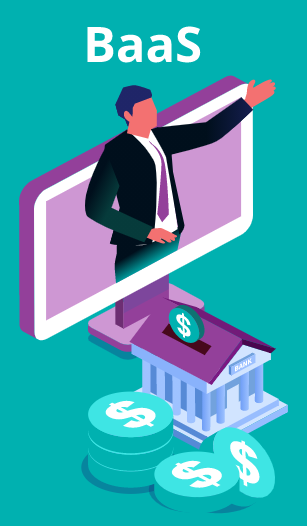
A decade ago, the possibility of a non-banking organization offering banking services was unthinkable. Today even the most traditional banks are now racing to keep pace and embrace banking-as-a-service (BaaS). And undoubtedly, technology is the driving force and enabler of the new Banking-as-a-Service business model. It is a technology stack that is backed by a licensed bank to allow anyone, including fintechs, to embed financial services into their business. In other words, BaaS models allow non-banking entities to deliver a set of banking functionalities to their customers by tapping into banking functionalities offered by the licensed bank. As competition from fintechs and tech giants intensifies, BaaS models offer banks the opportunity to expand their reach and connect with new demographics in innovative ways.

BaaS opens up a great opportunity for financial institutions to acquire customers at a lower cost. Tech players like Amazon, Uber, Facebook, and Google are already offering financial services embedded within their platforms. What many customers don’t know is that behind these banking products there is a bank or financial institution providing the services without revealing their brand but expanding their balance sheet exponentially. BaaS presents a USD 25 billion opportunity for banks.1 Little wonder that all banks surveyed in our American Banker research said that building a partner ecosystem for digital banking and offering new products & services is their #1 objective.
To put it simply, BaaS is a digital landscape where the bank’s role is limited to empowering non-banking partners to deliver a seamless customer experience and offer innovative solutions to their problems. An API-enabled open banking solutions can help them develop new offerings to improve share of wallet, cash in on new revenue sources and connect with a new digital-native customer segment. The shift to BaaS models requires a change in traditional banking approaches as banks must open their data and application services to fintechs and third parties through standardized APIs. The bank’s branding may not be obvious to customers even as the organization provides seamless support via an API-based embedded banking model. They must also be ready to integrate with merging platforms where the customer ownership and experience may be decided by others. As embedded banking or BaaS continues to grow, banks must decide on their role in this evolving ecosystem with the objective of remaining competitive and relevant and capturing revenue at lower costs.
Fintechs and tech companies may initially play second fiddle in a BaaS ecosystem by acting as vertical solution providers, though some big organizations may well negotiate terms and prices. BaaS also comes with the risk of the bank’s unique brand identity getting lost as they operate in the background as invisible players. They may lose control of customer engagement as they become a mere distributor of financial services. This can lead to a complete disconnect with customers and eventual loss of revenue as well. But the high-volume opportunity that BaaS offers cannot be ignored. BaaS models also offer banks the opportunity to serve unbanked and underbanked customers to create new revenue opportunities. Banks should continue to focus on customer expectations, use technology to innovate, stay relevant and effectively manage outcomes to meet business objectives. There is also the possibility of some partners obtaining their own banking licenses and becoming direct competitors. Banks need to have a clear partner ecosystem strategy in place along with an established product roadmap and the ability to react to evolving market situations quickly.

The first step to moving to BaaS models is to modernize the technology stack. Legacy technology cores lack the agility required to react quickly and innovatively to market needs. Fortunately, banks don’t need to touch their legacy cores as they modernize to meet BaaS requirements because transforming the core is time-consuming, expensive, and risky. Specialized technology vendors can deploy a state-of-the-art cloud-native middle layer to sit on top of the core that can help banks transition into the API-based economy.
BaaS and API-based banking models may become ubiquitous in the future. The world is already witnessing the emergence of full-fledged digital banks architected to enable services through BaaS. The ability to become a distributor of services will require a cost structure that can be attained only by a complete digital banking transformation. At the same time, banks must continue to distinguish themselves based on price, products, real-time personalization, and other such aspects as achieving differentiation in BaaS will be hard in the long term.